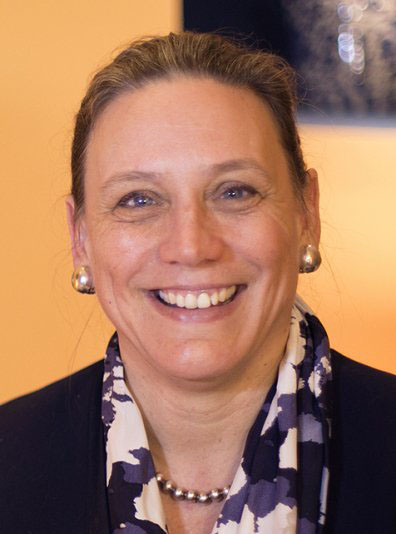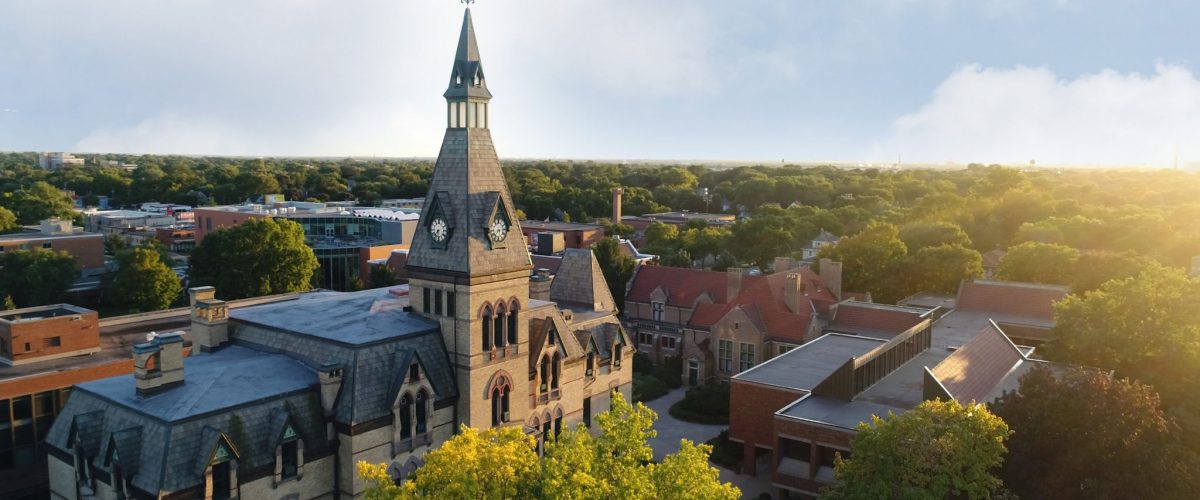Institutions of higher learning must hone flexibly to respond to campus divisions over religion and race that can escalate into the kind of public controversy currently embroiling Hamline University, a panel of experts said during a Jan. 31 webinar hosted by Interfaith America.
“Every intellectual community and institution of higher education needs to create practices of reflection and to have difficult conversations,” said Laurie Patton, president of Middlebury College in Vermont and author of Who Owns Religion? Scholars and Their Publics in the Late Twentieth Century.
At Middlebury, that process is called “conflict resolution as a liberal art,” which serves to guide the institution through contentious disagreements and to prepare students for life in a diverse society, she explained during “Art, Religion and Academic Freedom: Lessons from the Hamline/Prophet Muhammad Controversy.”

Laurie Patton
“If our fundamental focus is to prepare and energize democratic citizens in the United States, then we need to make democracy concrete,” Patton said. “It can’t be an abstraction. And that includes conflict transformation, conflict management and all the different modes of having difficult dialogue, which is really hard and takes a lot of time and practice and intellectual courage.”
Patton was joined on the panel by Maria Dixon Hall, chief diversity officer at Southern Methodist University, and Omid Safi, professor of Islamic studies at Duke University. Their conversation was moderated by Eboo Patel, founder and president of Interfaith America.
Patel opened the livestreamed event with a summary of the Hamline University controversy, which began with the November firing of adjunct art instructor Erika Lopez Prater for showing students a 14th-century painting depicting the Islamic Prophet Muhammad. Such images are considered offensive by many Muslims.
University officials responded to a Muslim student’s complaint with an email describing Prater’s action as Islamophobic. More students expressed offense during a campus forum in which an Islamic expert equated the classroom presentation to promoting pedophilia or Naziism.
But alternative perspectives emerged in the weeks that followed. Numerous scholars criticized the university for trampling Prater’s academic freedom, and other Muslim leaders explained the prohibition on images of Muhammad is not universal in Muslim life, and that some believers use them for devotional purposes.
Prater, whose syllabus alerted students the painting would be shown and offered to excuse students who didn’t want to see the image, has sued the university for religious discrimination.

Omid Safi
The diversity of opinion about depictions of the prophet should have been inferred from the fact that Islam is a 1,400-year-old tradition that spans the globe, Safi said.
“Why should we be surprised that different committed Muslims have also had a variety of perspectives? The point I try to share with my students, regardless of their faith backgrounds, is that devout, committed, observant Muslims at times have used these kinds of devotional images to accentuate their love for the prophet and their love for God, and because of that very same love and devotion, others have eschewed the using of images lest they be led astray.”
Safi, who is Muslim, said some of his courses include viewing images of Muhammad and he does not give students specific notice they will be shown, as Prater did at Hamline.
“There are hundreds and hundreds of these kinds of images present,” he said. “So, I tell them we’re going to be taking seriously the full spectrum of Muslim engagement with the prophet, including song, music, poetry and images. And that’s the extent of advance notification I give my students.”
Saif said he does not doubt the sincerity of the Hamline students who were offended but would have challenged them to consider the notion that Muslims in countries like Pakistan, Iran and Turkey produce images of the prophet from a sense of reverence.
“And then I would tell them that in Istanbul at the Turkish and Islamic Art Museum, which is as good an Islamic art museum as there is in the world, when they had images and relics of the Prophet Muhammad showing there was a line around the block for people to get in.”
“In order to survive in this world, you have to speak multiple cultural languages.”
Such images have been produced in both the Suni and Shi’a traditions of Islam, Safi added. “One of the catastrophes, intellectually speaking, of this situation is that the speakers from the advocacy groups didn’t seem to have any way of conceptualizing these images as anything other than the kinds of horrific Islamophobic images the Jyllands-Posten (newspaper) in Denmark had produced.”
The situation at Hamline also demonstrates that intra-faith and intra-cultural education are needed to inform members of a faith tradition of its richness and diversity, he said. “Each one of us speaks from a certain vantage point. None of us speaks for something called capital ‘I’ Islam.”
Helping students and faculty bridge those cultural and religious differences is the aim of the diversity program at SMU, Dixon Hall said.
“Our goal is for people to become culturally intelligent about (other) people’s traditions and cultures. We don’t ask them to like them. We don’t ask them to adhere to them. But we treat it like a foreign language. In order to survive in this world, you have to speak multiple cultural languages.”

Maria Dixon Hall
Laying the groundwork for cultural intelligence has enabled most complaints to be resolved with one-on-one conversations between student, faculty or department-level diversity officers, she said. “Sometimes the student simply wants to be heard — wants to be heard at the highest level. And if that’s the case, my job is to listen.”
But occasionally there are cases when a student is in “gotcha mode,” she said, and may take their complaint to social media. “The first thing I tell a student is we have a principle of institutional grace, and that means we assume people will make mistakes.”
Another principle is that of “big table inclusion,” which is communicating the idea that a college campus is naturally made up of people who have divergent views, Dixon Hall said. “How then do you proceed into this world knowing that? My hope is always that by the time we get to those values, we’ve brought the temperature down.”
Patton said there is no one-size-fits-all approach to fostering cultures of reflection and discourse. “That’s going to look different at every place depending on its locale, its history, its status, its way of thinking about the public square.”
But it has to be done before “eruptive public spaces” emerge, as they have at Hamline, she added. “When those tensions erupt, those rules of debate that might be used to, or might be trained on, disappear. And so, we need to be deeply prepared for other ways of maintaining relationship.”
Related articles:
Ron DeSantis: The anti-woke prophet of evangelicals | Analysis by Rodney Kennedy
Remembering a sign for the times: The serpent and the seminary | Opinion by Dalen Jackson
Changing Our Mind, 25,000 sales later | Opinion by David Gushee


